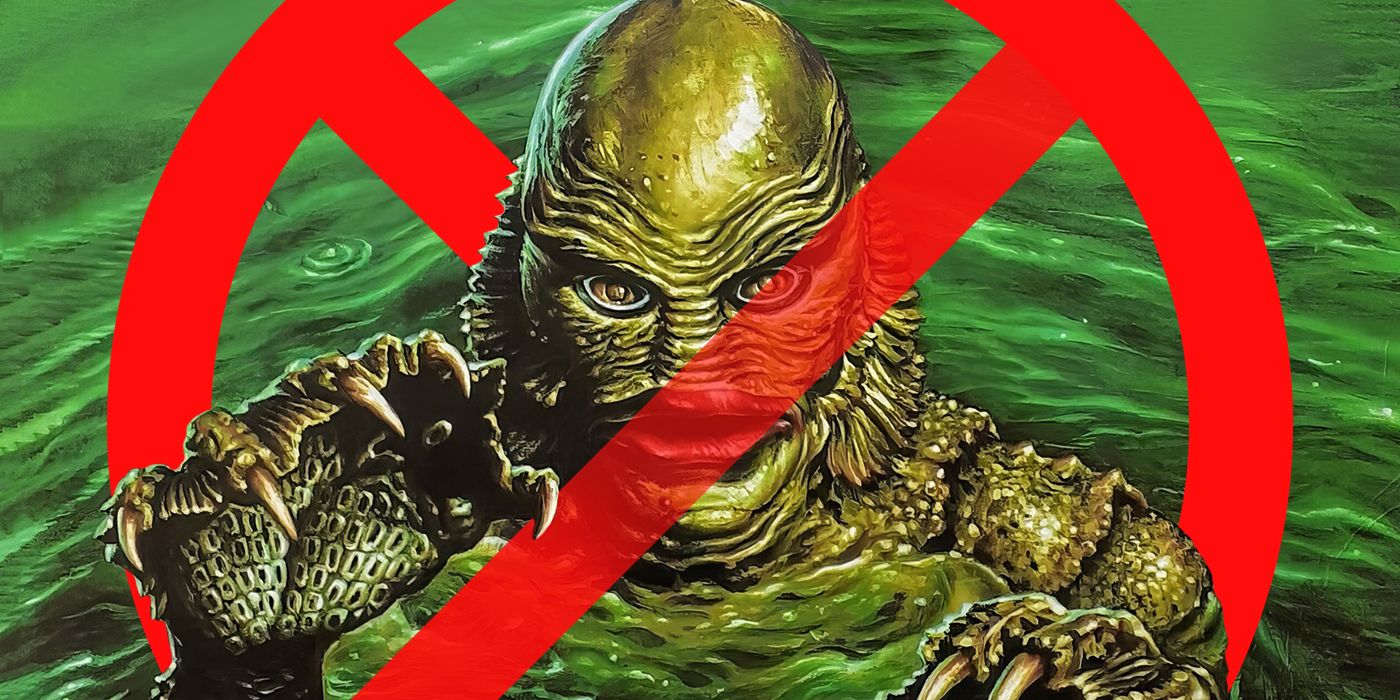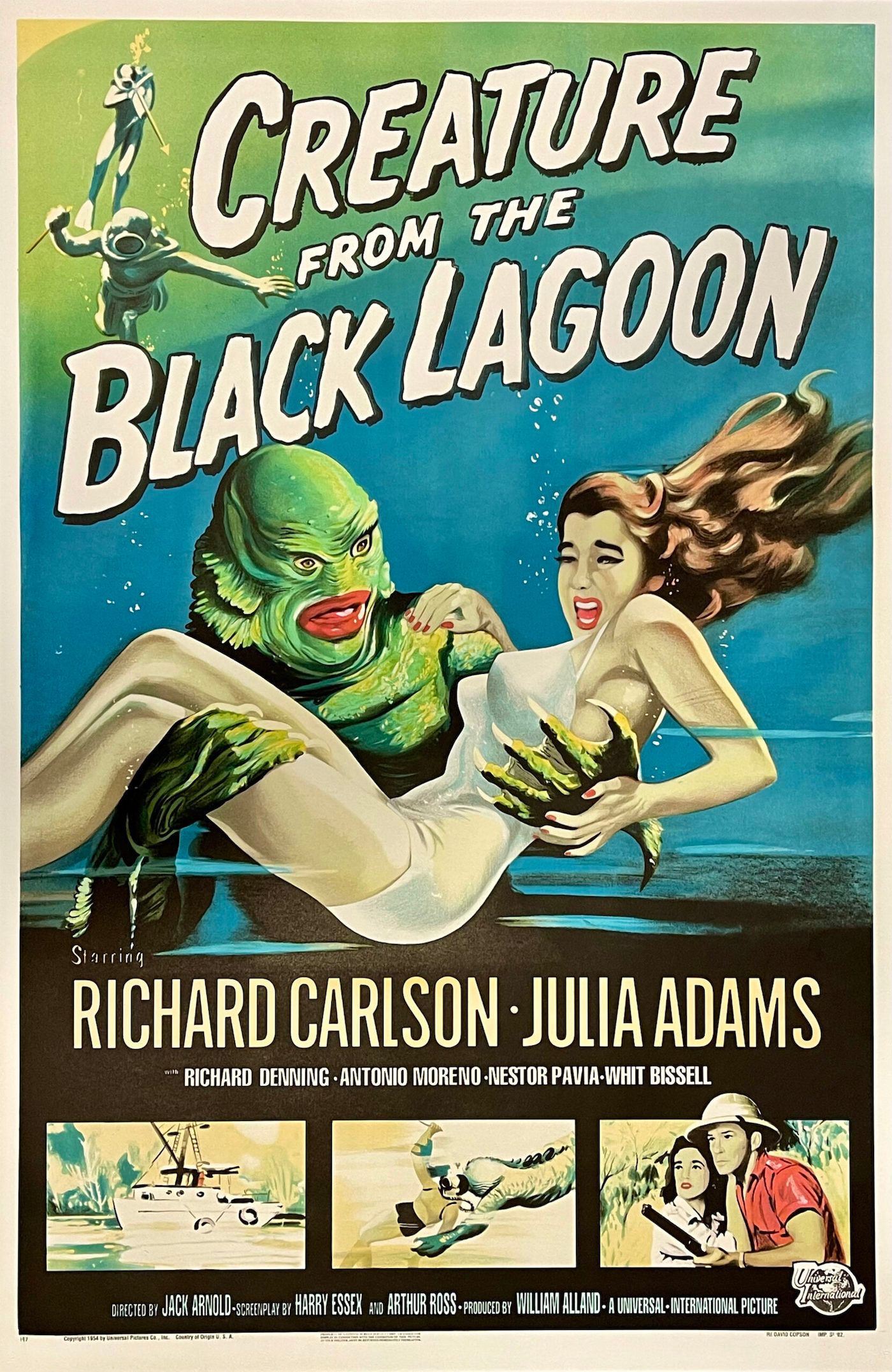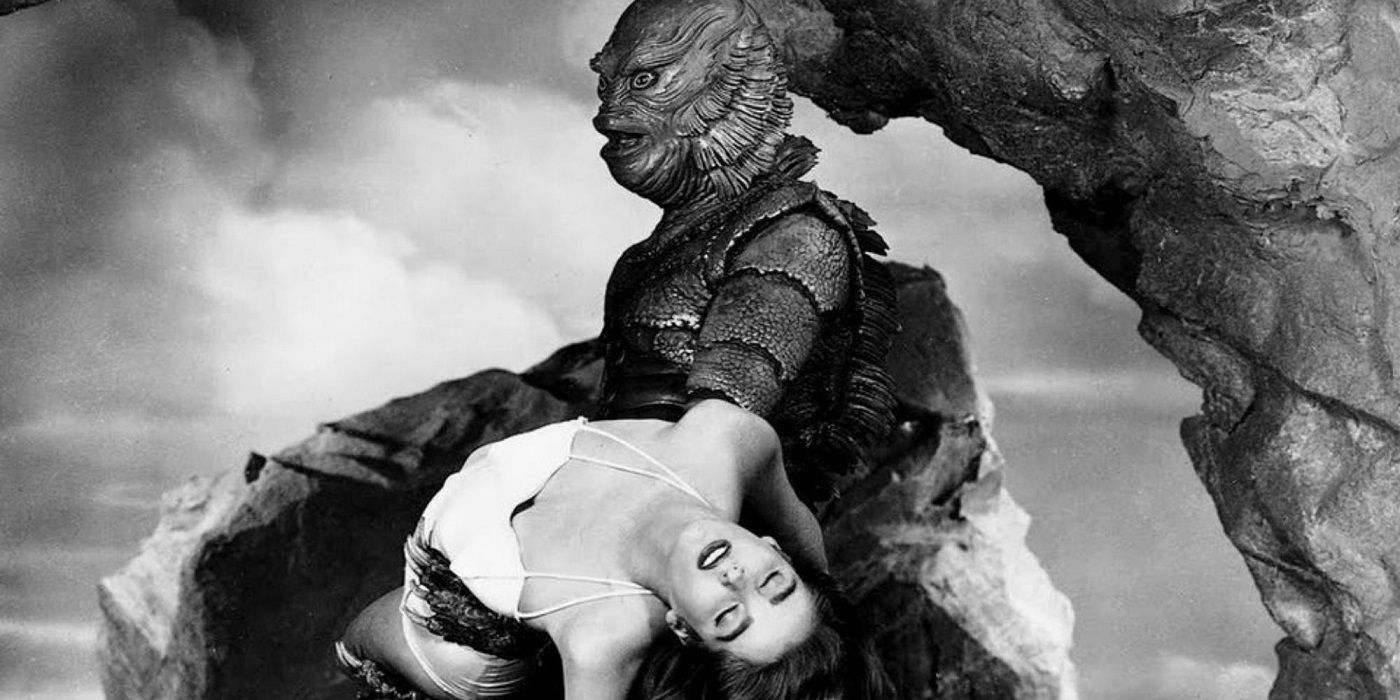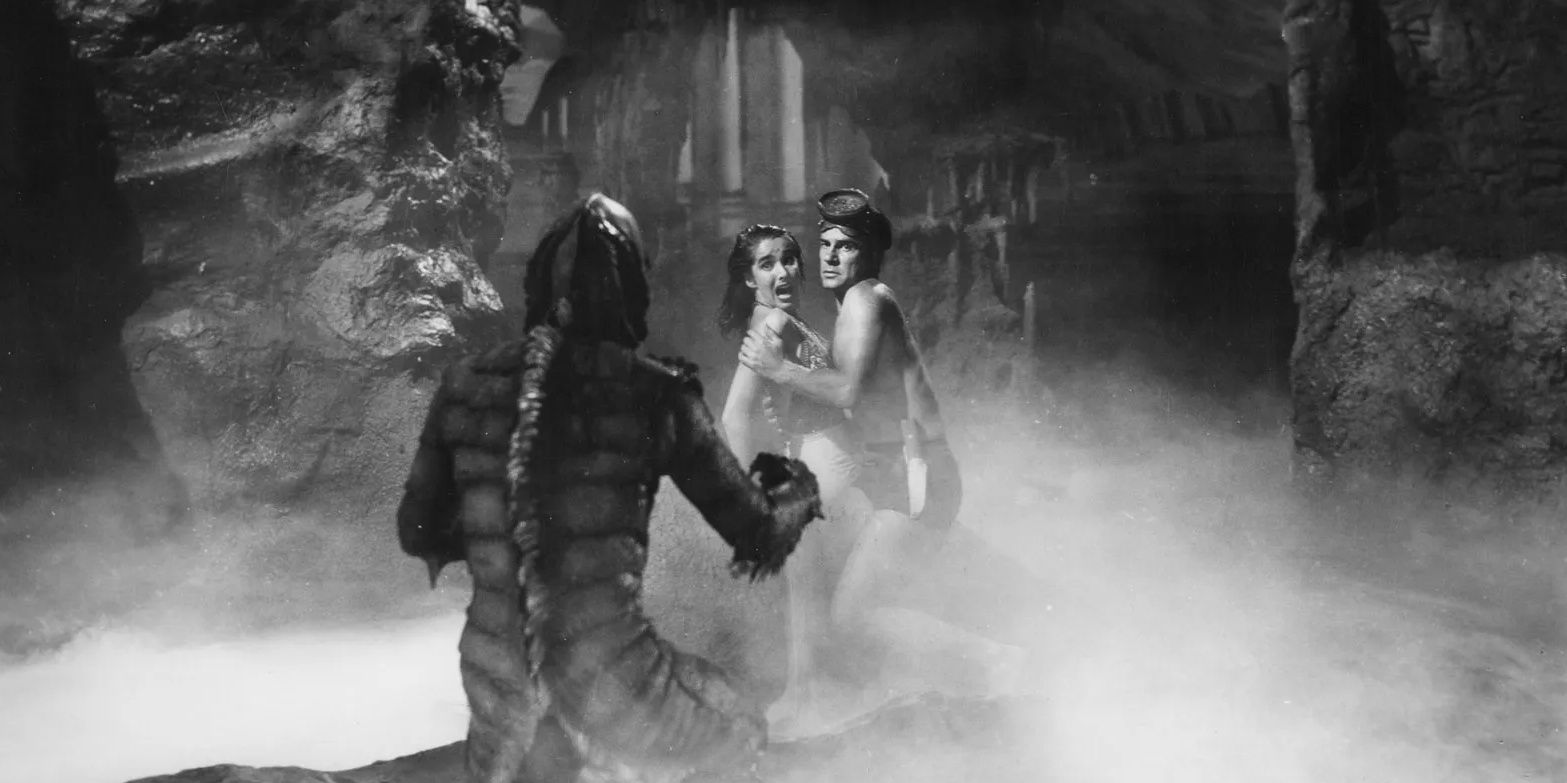The Big Picture
- Creature from the Black Lagoon is a beautifully shot horror classic that still captivates audiences with its atmospheric and breathtaking underwater scenes.
- The film raises questions about the limits of science, indigenous rights, and the hubris of scientific research in unexplored lands.
- However, it has a problematic subtext, drawing parallels between the creature and indigenous peoples, perpetuating negative stereotypes and a colonialist narrative.
Released 70 years ago, in 1954, and a mere hour and 20 minutes long, Jack Arnold's Creature from the Black Lagoon is a movie that has more than earned its spot in film history. Simple, straight to the point, and beautifully shot, it has inspired generations of creators, the most recent and well-known example being director Guillermo Del Toro and his Oscar-winning film The Shape of Water, a movie that functions as a sort of sequel to Arnold's original. In it, a strange fish-man is taken to a laboratory in the U.S. for experiments and falls in love with a mute custodian. His feelings are reciprocated, unlike in Creature from the Black Lagoon, in which the titular half-man, half-fish is an object of fear for his romantic interest as well as the other characters — scientists like the ones that capture the two-legged amphibian played by Doug Jones in Del Toro's version of the story.
That's because Creature from the Black Lagoon is a much more traditional horror flick. It is a Universal monster classic, even though it never quite uses the word monster to refer to its main antagonist — a choice that becomes quite telling once we begin to analyze the movie. With a basic premise about a group of researchers that travel to a remote lagoon in the Amazon to search for the remains of a prehistoric human-like creature (played by Ben Chapman and Ricou Browning) only to find it living and thriving under dark waters, the film presents us with debates about the limits of science and how best to approach native life in remote locations. It also leaves us wondering about its stance with regard to the rights of indigenous peoples while, on a more superficial level, offering us an atmospheric adventure with incredibly photographed underwater sequences. It's a movie that feels somewhat dubious nowadays, but that still manages to captivate and prove its worth.
Creature from the Black Lagoon (1954)
A strange prehistoric beast lurks in the depths of the Amazonian jungle. A group of scientists try to capture the animal and bring it back to civilization for study.
- Director
- Carl Rinsch
- Main Genre
- Adventure
- Writers
- Gary Ross
- Studio
- Universal Pictures
What Is 'Creature from the Black Lagoon' About?
With a screenplay written by Harry Essex and Arthur A. Ross, Creature from the Black Lagoon is based on a story by Maurice Zimm, which, in turn, builds on an idea by William Alland. Its basic plot is the kind that even 1954 audiences had seen before, particularly in the form of 1933's King Kong: white men and a white woman travel to some non-European location where they run into a bizarre life form that becomes obsessed with the aforementioned white woman. In Creature from the Black Lagoon, this translates into geologist Carl Maia (Antonio Moreno) enlisting the help of a group of researchers to further investigate the fossil of a hand with webbed fingers found in the depths of the Amazon forest. The core characters in the story are the cynical, money-oriented Mark (Richard Denning), the more romantic ichthyologist David (Richard Carlson), and David's colleague and sweetheart Kay (Julie Adams). Aboard the Rita, a boat helmed by Captain Lucas (Nestor Paiva), the team of scientists travels into a place known as the Black Lagoon, a paradise from which none have ever returned.
Once at the lagoon, Kay, David, and the others come face to face with another member of the species whose fossil Dr. Maia has found: a fish-like creature that walks on his hind legs and can breathe both underwater and on land. Violent and extremely wary of his human visitors, said creature begins his attack on the Rita, taking out members of the crew as David and Mark try to decide what to do about him. David wants to take the creature alive in order to conduct further research, while Mark, interested only in the amount of money that such a finding might earn him, votes to kill the newfound species. As the situation becomes more direr, the creature develops a crush on Kay, eventually kidnapping her and taking her to his cave.
'Creature from the Black Lagoon' Is a Movie About the Hubris of Science
At a time in which humanity's attention was beginning to turn to space, with pulpy sci-fi movies such as 1951's The Day the Earth Stood Still and 1956's Forbidden Planet dropping by the bulk, Creature from the Black Lagoon is a movie that invites its viewers to look inwards, towards the very planet in which they live. Textually, the film asks us why should we believe in unknown species scattered across the universe, but not in our own backyard. It reminds us that science, despite its sudden interest in what lies beyond the stratosphere, has not done its job of teaching us about the world we live in. It also tells us a lot about how science may fall victim to its excessive hubris when conducting research in so-called unexplored lands.

All the Wild ‘Creature From the Black Lagoon’ Remakes We Never Got
It is one of the most beloved Universal Monsters movies, yet a remake has always struggled to exist.The moral compass of Creature from the Black Lagoon points at David in the fight about what should be done with this new species. Wanting to take him to a laboratory alive is painted as the correct choice to be made, as opposed to simply shooting an entirely unknown life form on sight with a harpoon. And, you know, when forced to choose between one option or the other, it's pretty clear who's in the right. However, as Del Toro explored in The Shape of Water, taking the creature from its ecosystem would also be an extremely cruel and careless decision that might even cost the lives of more people. As Kay reminds us at one point in the film, after the creature is captured and locked in Captain Lucas' boat, in the wild, threatening sounds and cries for help can be easily mistaken for one another. A cornered beast has the tendency to lash out, and that is precisely what the movie's creature does.
Thus, watching Creature from the Black Lagoon nowadays, with our understanding of how nature should be treated and with retellings of the story such as Del Toro's, we can't help but feel that Mark and David are both evil men. It is way easier for us to sympathize with the creature, seeing it as a maybe misguided good guy threatened in his own home.
'Creature from the Black Lagoon' Has an Unsavory Subtext
This sentiment is intensified when we consider some of the subtexts of Creature from the Black Lagoon — subtexts that have been widely explored when it comes to the movie's 1933 cousin, King Kong. There is an analogy to be drawn between the creature and the indigenous peoples of the Amazon, then deemed primitive and barely human by the colonization efforts set forth by the many racist governments of the region. The fact that the film subscribes to the notion of the Amazon as untouched by human hands and unseen by human eyes is already worrisome, as such a narrative was widely popularized in a way that painted native populations as inhuman. The region was very much inhabited, just not by the people the local governments wished it to be. So for a movie to be about white scientists arriving at a land that they believe to be deserted only to be greeted by a barely rational half-human sure feels very '50s in the worst of ways.
This reading of the film is supported by the characters' own treatment of the creature not as an animal, but as something of an equal. The most telling sign of this rapport with the beast is how they refer to him not as it, but by a gendered pronoun. This is, of course, not enough to say that the film's characters deem the creature to be human: we also call our dogs he and she. However, it does point to a certain familiarity between the researchers and the creature — a familiarity that did not evolve through physical and emotional proximity, but that emerges out of the recognition of another human. Add to all that the creature's carnal desire for Kay, and you have all the makings of the classic myth of the violent, inferior savage.
Watching this movie from the Southern Hemisphere, it is also hard not to cringe at the filmmakers' lack of geographic knowledge of their primary setting. Creature from the Black Lagoon takes place in Brazil, and names like Dr. Maia and Matos, as well as the Brazilian flag flying in one of the scenes, make that quite clear. However, Brazil doesn't speak Spanish. The country's official language is Portuguese. Now, there aren't many scenes that feature languages other than English in Creature from the Black Lagoon, but the ones that do are most certainly in Spanish.
'Creature from the Black Lagoon' Is Beautifully Shot and Atmospheric
None of this makes Creature from the Black Lagoon a movie that shouldn't be watched. It just makes it a product of its much less racially sensitive time. It's a movie that deserves to be critiqued, especially because it is a movie that deserves to live on. With amazing underwater shots and an unsettling atmosphere that lasts from start to finish, it's not hard to understand why Creature from the Black Lagoon is a horror classic and why it continues to inspire creators up to this day.
Director Jack Arnold makes no effort to hide the creature's face, showing it as soon as possible without damaging the plot. However, that never takes away from the film's atmosphere. On the contrary, it helps make it more and more unsettling, as we are left to marvel at the wonderful prosthetics job done by Jack Kevan and Chris Mueller Jr., based on the designs of Milicent Patrick, a formidable artist whose name was erased in favor of Bud Westmore. With its beady eyes and movable gills, the creature's mask, aided by the editing talents of Ted J. Kent, transmits fear, desire, and rage. It's honestly amazing how much we can project on a simple piece of rubber.
Speaking of pieces of rubber, the underwater ballet that Ricou Browning, who plays the creature inside the lagoon, engages in with Adams, Carlson, and Denning is never boring to watch. Shooting underwater might be difficult, especially when trying to create dynamic scenes, as our movements become naturally slower when our bodies are submerged. However, cinematographer William E. Snyder captures all those moments with care to make them as gorgeous as possible, and the music by Henry Mancini, Hans J. Salter, and Herman Stein ensures a thrilling atmosphere. The scene in which the creature swims beneath Kay, mirroring her movements, is particularly enthralling to watch.
Looking at the grand scheme of things, Creature from the Black Lagoon is an entertaining watch that is also essential for our better understanding of our current horror landscape. It is, after all, one of those cinematic landmarks that served as a stepping stone for everything that came after. However, it is also a film made by a Hollywood that did not care about international markets nor about racial sensitivity. Because of that, it is also a movie that needs to be looked at through a certain lens. And what we see isn't always easy on the eyes.

Creature from the Black Lagoon (1954)
A beautifully shot horror classic with unignorable racial sensitivity issues.
A strange prehistoric beast lurks in the depths of the Amazonian jungle. A group of scientists try to capture the animal and bring it back to civilization for study.
- The movie is beautifully shot, with the underwater scenes being especially breathtaking.
- Highly atmospheric, its impact resists up to this day.
- Much like 'King Kong', the film has a problematic subtext that makes it a little unsavory.
The Creature From the Black Lagoon is available to rent on Amazon in the U.S.


